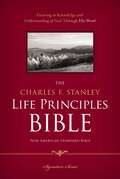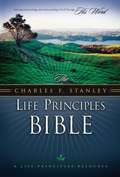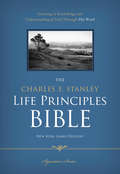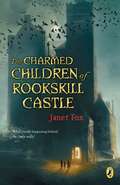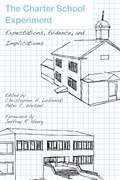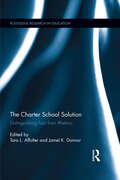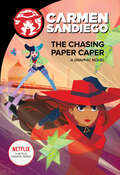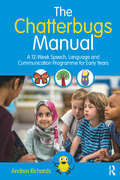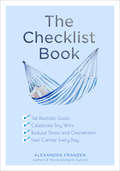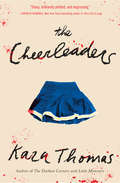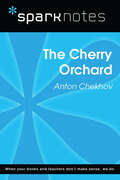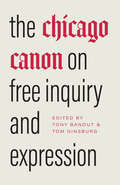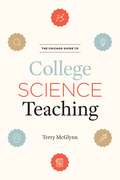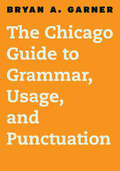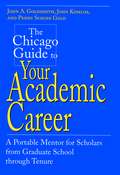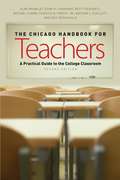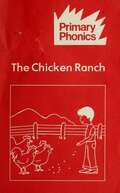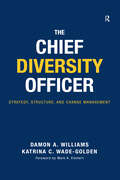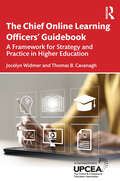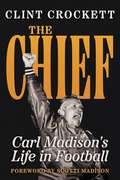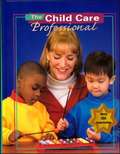- Table View
- List View
The Charles F. Stanley Life Principles Bible, NASB: Holy Bible, New American Standard Bible
by Charles F. StanleyThe Charles F. Stanley Life Principles Bible delivers Dr. Stanley's cherished values to benefit every Christian in his or her life's pursuits. With more than 442,000 in print, The Charles F. Stanley Life Principles Bible communicates the life principles Dr. Stanley has gleaned from the Word through his years of Bible teaching and pastoral ministry. The result is a Bible overflowing with practical articles, notes, and sidebars that help readers understand what the Bible has to say about life's most important questions. Features include: 30 Life Principles with articles throughout the Bible Life Lessons verse notes Life Examples from the people of the Bible Answers to Life's Questions and What the Bible Says About articles God's Promises for Life index to get into the Scriptures Book introductions ConcordancePart of the Signature Series line of Thomas Nelson Bibles
The Charles F. Stanley Life Principles Bible, NKJV
by Charles F. StanleyThe Charles F. Stanley Life Principles Bible delivers Dr. Stanley's cherished values to benefit every Christian in his or her life's pursuits. With more than 442,000 in print, The Charles F. Stanley Life Principles Bible communicates the life principles Dr. Stanley has gleaned from the Word through his years of Bible teaching and pastoral ministry. The result is a Bible overflowing with practical articles, notes, and sidebars that help readers understand what the Bible has to say about life's most important questions.Features include: 30 Life Principles with articles throughout the BibleLife Lessons verse notesLife Examples from the people of the BibleAnswers to Life's Questions and What the Bible Says About articlesGod's Promises for Life index to get into the Scriptures Book introductionsConcordancePart of the Signature Series line of Thomas Nelson Bibles
The Charles F. Stanley Life Principles Bible, NKJV
by Charles StanleyThe Charles F. Stanley Life Principles Bible delivers Dr. Stanley's cherished values to benefit every Christian in his or her life's pursuits. With more than 442,000 in print, The Charles F. Stanley Life Principles Bible communicates the life principles Dr. Stanley has gleaned from the Word through his years of Bible teaching and pastoral ministry. The result is a Bible overflowing with practical articles, notes, and sidebars that help readers understand what the Bible has to say about life's most important questions. Features include: 30 Life Principles with articles throughout the Bible Life Lessons verse notes Life Examples from the people of the Bible Answers to Life's Questions and What the Bible Says About articles God's Promises for Life index to get into the Scriptures Book introductions Concordance Part of the Signature Series line of Thomas Nelson Bibles
The Charmed Children of Rookskill Castle
by Janet Fox"Keep calm and carry on." That's what Katherine Bateson's father told her, and that's what she's trying to do: when her father goes off to the war, when her mother sends Kat and her brother and sister away from London to escape the incessant bombing, even when the children arrive at Rookskill Castle, an ancient, crumbling manor on the misty Scottish highlands. But it's hard to keep calm in the strange castle that seems haunted by ghosts or worse. What's making those terrifying screeches and groans at night? Why do the castle's walls seem to have a mind of their own? And why do people seem to mysteriously appear and disappear? Kat believes she knows the answer: Lady Eleanor, who rules Rookskill Castle, is harboring a Nazi spy. But when her classmates begin to vanish, one by one, Kat must uncover the truth about what the castle actually harbors--and who Lady Eleanor really is--before it's too late.From the Hardcover edition.
The Charter School Experiment: Expectations, Evidence, and Implications
by Christopher A. Lubienski Jeffrey R. Henig Peter C. WeitzelWhen charter schools first arrived on the American educational scene, few observers suspected that within two decades thousands of these schools would be established, serving almost a million and a half children across forty states. The widespread popularity of these schools, and of the charter movement itself, speaks to the unique and chronic desire for substantive change in American education. As an innovation in governance, the ultimate goal of the charter movement is to improve learning opportunities for all students--not only those who attend charter schools but also students in public schools that are affected by competition from charters. In The Charter School Experiment, a select group of leading scholars traces the development of one of the most dynamic and powerful areas of education reform. Contributors with varying perspectives on the charter movement carefully evaluate how well charter schools are fulfilling the goals originally set out for them: introducing competition to the school sector, promoting more equitable access to quality schools, and encouraging innovation to improve educational outcomes. They explore the unintended effects of the charter school experiment over the past two decades, and conclude that charter schools are entering a new phase of their development, beginning to serve purposes significantly different from those originally set out for them.
The Charter School Experiment: Expectations, Evidence, and Implications
by Christopher A. LubienskiWhen charter schools first arrived on the American educational scene, few observers suspected that within two decades thousands of these schools would be established, serving almost a million and a half children across forty states. The widespread popularity of these schools, and of the charter movement itself, speaks to the unique and chronic desire for substantive change in American education. As an innovation in governance, the ultimate goal of the charter movement is to improve learning opportunities for all students—not only those who attend charter schools but also students in public schools that are affected by competition from charters. In The Charter School Experiment, a select group of leading scholars traces the development of one of the most dynamic and powerful areas of education reform. Contributors with varying perspectives on the charter movement carefully evaluate how well charter schools are fulfilling the goals originally set out for them: introducing competition to the school sector, promoting more equitable access to quality schools, and encouraging innovation to improve educational outcomes. They explore the unintended effects of the charter school experiment over the past two decades, and conclude that charter schools are entering a new phase of their development, beginning to serve purposes significantly different from those originally set out for them.
The Charter School Solution: Distinguishing Fact from Rhetoric (Routledge Research in Education)
by Tara L. Affolter Jamel K. DonnorChallenging the popular perception that the free market can objectively ameliorate inequality and markedly improve student academic achievement, this book examines the overly positivistic rhetoric surrounding charter schools. Taking a multifocal approach, this book examines how charter schools reproduce inequality in public education. By linking charter schools to broader social issues and political economic factors, such as neoliberalism, race, and class, The Charter School Solution presents a more complete and nuanced assessment of charter schools in the context of the American public education system.
The Chasing Paper Caper (Carmen Sandiego Graphic Novels)
by Clarion BooksThis full-color graphic novel, based on the Netflix series starring Gina Rodriguez, introduces kids to geography, culture, and history. Take in all the action, adventure, and excitement of India with Carmen Sandiego, the world's greatest thief! Where in the world is Carmen Sandiego? Headed to the Mumbai, India for her next caper! It's up to Carmen and her crew to stop VILE from their evil exploits—but what is VILE after this time?
The Chatterbugs Manual: A 12-Week Speech, Language and Communication Programme for Early Years
by Andrea RichardsThe Chatterbugs Manual is a practical resource for all those supporting the development of the foundation communication skills of attention and listening, turn-taking and early vocabulary in children. The Chatterbugs programme has been designed to bridge the gap between education and specialist speech, language and communication provision, specifically with Early Years mainstream settings in mind. It enables school staff to prepare children—including those with delayed communication skills, EAL learners, or children with suspected special education needs—for learning in school by developing their communication skills through the use of robust communication strategies. The Chatterbugs Manual contains: An overview of the programme, including step-by-step instructions on how to plan and deliver a Chatterbugs session Guidance on identifying children likely to benefit from the programme Progress Tracking documents, along with information on measuring outcomes Child-friendly, illustrated session resources Frequently Asked Questions A parent-friendly information leaflet Information on models of implementation Information on accessing training and support Developed by an experienced speech and language therapist, Chatterbugs has consistently recorded successful outcomes for over 80% of participants since the programme’s inception in 2012, and for over 90% of participants since 2016. With its hands-on approach, the programme is an essential resource for educators, support staff, and speech and language therapists working with Early Years children.
The Checklist Book: Set Realistic Goals, Celebrate Tiny Wins, Reduce Stress and Overwhelm, and Feel Calmer Every Day
by Alexandra FranzenMaster both major and minor tasks—by going back to the basics and writing out a simple checklist. It will change your life. The checklist is one of the world&’s oldest—and most effective—productivity systems. If anything, says entrepreneur Alexandra Franzen, it is just as valuable now as it was during the days of the Roman Empire, allowing us to tangibly plan our day and set in stone what we want to accomplish. There are countless apps and organizational systems promising to help us straighten out our lives, but often they only add to the madness and leave us feeling drained and overwhelmed. Learn how to: · Choose your highest priorities · Set realistic goals · Celebrate tiny wins · Feel calmer every day By physically writing down our tasks on a single piece of paper, we force ourselves to be realistic and limit how much we can do in a day. Too often, we cram our day with tasks and chores and leave almost no space for self-care or time with loved ones. We end up disappointed in our inability to complete our never-ending to-do list. Checklists help you accomplish what needs to be done—and enjoy things you want to be doing, too. &“There are thousands of books on how to become more organized and productive, but very few have the heart, soul, humor, and gentle encouragement of this book.&” —Ellen Fondiler, career and business strategist
The Cheerleaders
by Kara ThomasFrom the author of The Darkest Corners and Little Monsters comes an all-new edge-of-your-seat thriller set in upstate New York about an eerie sequence of seemingly unrelated events that leaves five cheerleaders dead. <P><P>There are no more cheerleaders in the town of Sunnybrook.First there was the car accident--two girls dead after hitting a tree on a rainy night. Not long after, the murders happened. Those two girls were killed by the man next door. The police shot him, so no one will ever know his reasons. Monica's sister was the last cheerleader to die. After her suicide, Sunnybrook High disbanded the cheer squad. No one wanted to be reminded of the girls they'd lost. <P><P>That was five years ago. Now the faculty and students at Sunnybrook High want to remember the lost cheerleaders. But for Monica, it's not that easy. She just wants to forget. <P><P>Only, Monica's world is starting to unravel. There are the letters in her stepdad's desk, an unearthed, years-old cell phone, a strange new friend at school. . . . Whatever happened five years ago isn't over. Some people in town know more than they're saying. And somehow, Monica is at the center of it all. <P>There are no more cheerleaders in Sunnybrook, but that doesn't mean anyone else is safe.
The Cherry Orchard (SparkNotes Literature Guide Series)
by SparkNotesThe Cherry Orchard (SparkNotes Literature Guide) by Anton Chekhov Making the reading experience fun! Created by Harvard students for students everywhere, SparkNotes is a new breed of study guide: smarter, better, faster.Geared to what today's students need to know, SparkNotes provides:*chapter-by-chapter analysis *explanations of key themes, motifs, and symbols *a review quiz and essay topicsLively and accessible, these guides are perfect for late-night studying and writing papers.
The Chicago Canon on Free Inquiry and Expression
by Tom Ginsburg Tony BanoutA collection of texts that provide the foundation for the University of Chicago’s longstanding tradition of free expression, principles that are at the center of current debates within higher education and society more broadly. Free inquiry and expression are hotly contested, both on campus and in social and political life. Since its founding in the late nineteenth century, the University of Chicago has been at the forefront of conversations around free speech and academic freedom in higher education. The University’s approach to free expression grew from a sterling reputation as a research university as well as a commitment to American pragmatism and democratic progress, all of which depended on what its first president referred to as the “complete freedom of speech on all subjects.” In 2015, more than 100 years later, then University provost and president J. D. Isaacs and Robert Zimmer echoed this commitment, releasing a statement by a faculty committee led by law professor Geoffrey R. Stone that has come to be known as the Chicago Principles, now adopted or endorsed by one hundred US colleges and universities. These principles are just a part of the long-standing dialogue at the University of Chicago around freedom of expression—its meaning and limits. The Chicago Canon on Free Inquiry and Expression brings together exemplary documents – some published for the first time here – that explain and situate this ongoing conversation with an introductory essay that brings the tradition to light. Throughout waves of historical and societal challenges, this first principle of free expression has required rearticulation and new interpretations. The documents gathered here include, among others, William Rainey Harper’s “Freedom of Speech” (1900), the Kalven Committee’s report on the University’s role in political and social action (1967), and Geoffrey R. Stone’s “Free Speech on Campus: A Challenge of Our Times” (2016). Together, the writings of the canon reveal how the Chicago tradition is neither static nor stagnant, but a vibrant experiment; a lively struggle to understand, practice, and advance free inquiry and expression. At a time of nationwide campus speech debates, engaging with these texts and the questions they raise is essential to sustaining an environment of broad intellectual and ideological diversity. This book offers a blueprint for the future of higher education’s vital work and points to the civic value of free expression.
The Chicago Guide to College Science Teaching (Chicago Guides To Academic Life Ser.)
by Terry McGlynnHigher education is a strange beast. Teaching is a critical skill for scientists in academia, yet one that is barely touched upon in their professional training—despite being a substantial part of their career. This book is a practical guide for anyone teaching STEM-related academic disciplines at the college level, from graduate students teaching lab sections and newly appointed faculty to well-seasoned professors in want of fresh ideas. Terry McGlynn’s straightforward, no-nonsense approach avoids off-putting pedagogical jargon and enables instructors to become true ambassadors for science. For years, McGlynn has been addressing the need for practical and accessible advice for college science teachers through his popular blog Small Pond Science. Now he has gathered this advice as an easy read—one that can be ingested and put to use on short deadline. Readers will learn about topics ranging from creating a syllabus and developing grading rubrics to mastering online teaching and ensuring safety during lab and fieldwork. The book also offers advice on cultivating productive relationships with students, teaching assistants, and colleagues.
The Chicago Guide to Grammar, Usage, and Punctuation (Chicago Guides to Writing, Editing, and Publishing)
by Bryan A. GarnerThe authoritative guide to using the English language effectively, from &“the greatest writer on grammar and usage that this country has ever produced&” (David Yerkes, Columbia University). The author of The Chicago Manual of Style&’s popular &“Grammar and Usage&” chapter, Bryan A. Garner is renowned for explaining the vagaries of English with absolute precision and utmost clarity. With The Chicago Guide to Grammar, Usage, and Punctuation, he has written the definitive guide for writers who want their prose to be both memorable and correct. Garner describes standard literary English—the forms that mark writers and speakers as educated users of the language. He also offers historical context for understanding the development of these forms. The section on grammar explains how the canonical parts of speech came to be identified, while the section on syntax covers the nuances of sentence patterns as well as both traditional sentence diagramming and transformational grammar. The usage section provides an unprecedented trove of empirical evidence in the form of Google Ngrams, diagrams that illustrate the changing prevalence of specific terms over decades and even centuries of English literature. Garner also treats punctuation and word formation, and concludes the book with an exhaustive glossary of grammatical terms and a bibliography of suggested further reading and references.The Chicago Guide to Grammar, Usage, and Punctuation is a magisterial work, the culmination of Garner&’s lifelong study of the English language. The result is a landmark resource that will offer clear guidelines to students, writers, and editors alike. &“[A manual] for those of us laboring to produce expository prose: nonfiction books, journalistic articles, memorandums, business letters. The conservatism of his advice pushes you to consider audience and occasion, so that you will understand when to follow convention and when you can safely break it.&”—John E. McIntyre, Baltimore Sun
The Chicago Guide to Your Academic Career: A Portable Mentor for Scholars from Graduate School through Tenure (Chicago Guides to Academic Life)
by John Komlos John Goldsmith Penny GoldIs a career as a professor the right choice for you? If you are a graduate student, how can you clear the hurdles successfully and position yourself for academic employment? What's the best way to prepare for a job interview, and how can you maximize your chances of landing a job that suits you? What happens if you don't receive an offer? How does the tenure process work, and how do faculty members cope with the multiple and conflicting day-to-day demands? With a perpetually tight job market in the traditional academic fields, the road to an academic career for many aspiring scholars will often be a rocky and frustrating one. Where can they turn for good, frank answers to their questions? Here, three distinguished scholars—with more than 75 years of combined experience—talk openly about what's good and what's not so good about academia, as a place to work and a way of life. Written as an informal conversation among colleagues, the book is packed with inside information—about finding a mentor, avoiding pitfalls when writing a dissertation, negotiating the job listings, and much more. The three authors' distinctive opinions and strategies offer the reader multiple perspectives on typical problems. With rare candor and insight, they talk about such tough issues as departmental politics, dual-career marriages, and sexual harassment. Rounding out the discussion are short essays that offer the "inside track" on financing graduate education, publishing the first book, and leaving academia for the corporate world.
The Chicago Handbook for Teachers, Second Edition: A Practical Guide to the College Classroom (Chicago Guides to Academic Life)
by Alan Brinkley Betty Dessants Michael Flamm Mathew L. Ouellett Eric Rothschild Esam E. El-Fakahany Charles B. Forcey, Jr.Those who teach college students have extensive training in their disciplines, but unlike their counterparts at the high school or elementary school level, they often have surprisingly little instruction in the craft of teaching itself. The Chicago Handbook for Teachers, Second Edition, is an extraordinarily helpful guide for anyone facing the daunting challenge of putting together a course and delivering it successfully. Representing teachers at all stages of their careers, the authors, including distinguished historian Alan Brinkley, offer practical advice for almost any situation a new teacher might face, from preparing a syllabus to managing classroom dynamics. Beginning with a nuts and bolts plan for designing a course, the handbook also explains how to lead a discussion, evaluate your own teaching, give an effective lecture, supervise students' writing and research, create and grade exams, and more. This new edition is thoroughly revised for contemporary concerns, with updated coverage on the use of electronic resources and on the challenge of creating and sustaining an inclusive classroom. A new chapter on science education and new coverage of the distinctive issues faced by adjunct faculty broaden the book’s audience considerably. The addition of sample teaching materials in the appendixes enhances the practical, hands-on focus of the second edition. Its broad scope and wealth of specific tips will make The Chicago Handbook for Teachers useful both as a comprehensive guide for beginning educators and a reference manual for experienced instructors.
The Chicago Handbook for Teachers: A Practical Guide to the College Classroom
by Esam El-Fakahany Betty Dessants Michael Flamm Charles B. Forcey Mathew L. Ouellett Eric Rothschild Alan Brinkley Jr.Those who teach college students have extensive training in their disciplines, but unlike their counterparts at the high school or elementary school level, they often have surprisingly little instruction in the craft of teaching itself. The Chicago Handbook for Teachers, Second Edition, is an extraordinarily helpful guide for anyone facing the daunting challenge of putting together a course and delivering it successfully. Representing teachers at all stages of their careers, the authors, including distinguished historian Alan Brinkley, offer practical advice for almost any situation a new teacher might face, from preparing a syllabus to managing classroom dynamics. Beginning with a nuts and bolts plan for designing a course, the handbook also explains how to lead a discussion, evaluate your own teaching, give an effective lecture, supervise students' writing and research, create and grade exams, and more. This new edition is thoroughly revised for contemporary concerns, with updated coverage on the use of electronic resources and on the challenge of creating and sustaining an inclusive classroom. A new chapter on science education and new coverage of the distinctive issues faced by adjunct faculty broaden the book's audience considerably. The addition of sample teaching materials in the appendixes enhances the practical, hands-on focus of the second edition. Its broad scope and wealth of specific tips will make The Chicago Handbook for Teachers useful both as a comprehensive guide for beginning educators and a reference manual for experienced instructors.
The Chicken Bone Wish
by Barbara GirionJoshua Wilson is called a klutz. His brother, Benji, a star athlete, tries to help but nothing works. Until he meets "the Czar", who teaches Joshua that things can get better.
The Chicken Ranch (Primary Phonics #Set 4 Book 2)
by Barbara W. MakarA systematic, phonics-based early reading program that includes: the most practice for every skill, decodable readers for every skill, and reinforcement materials--help struggling students succeed in the regular classroom
The Chief Diversity Officer: Strategy Structure, and Change Management
by Damon A. Williams Katrina C. Wade-GoldenThis volume addresses the role of chief diversity officers as coordinating and integrating diversity leaders in higher education and other sectors.Having established in a companion volume the parameters for an effective diversity strategy, the authors address such questions as: What is a chief diversity officer? How might we create dynamic chief diversity officer infrastructures? What models of CDO structure exist in the academy? What misperceptions often confound the work of officers and the institutions they work within? What key competencies are necessary to lead as a CDO? How does the CDO role compare across higher education, non-profit, and corporate sectors? And how might the role serve as an important contributor to a collaborative vision for change and transformation in the academy?This book begins by delineating the evolution of the chief diversity officer role in the academy. Drawing on extensive qualitative and quantitative research on CDOs conducted for the purposes of this volume, it describes how the scope and responsibilities are variously defined at the organizations where the position has been created, and offers insights into the complexities and challenges of the role.On the basis of this data and the literature on organizational design and change management, the authors define the requisite skills, knowledge and background to be effective, review the alternative organizational and governance structures under which CDOs operate, and in so doing present the Chief Diversity Officer Development Framework as a basis for recruiting candidates, for structuring the position to succeed, and for providing prospective and incumbent CDOs with a realistic sense of the scope of the role.This title is also available in a set with its companion volume, Strategic Diversity Leadership.
The Chief Online Learning Officers' Guidebook: A Framework for Strategy and Practice in Higher Education
by Thomas B. Cavanagh Jocelyn WidmerThe Chief Online Learning Officers’ Guidebook explores the essential competencies required of Chief Online Learning Officers (COLOs) using insights from real-world leadership and expert perspectives from higher education. Digital and online learning have become strategic priorities for higher education institutions working toward enrollment growth, learner engagement, revenue generation, brand diversification, and enhanced student flexibility following the initial COVID-19 lockdown. This book’s unique framework substantiates and demonstrates key competencies that define the COLO role and enable advancements in the practice of online and digital higher education. Featuring over 50 contributions from COLOs, Chief Information Officers (CIOs), university presidents, and other higher education leaders, this UPCEA-endorsed guide offers practical strategies and comprehensive guidance for both current and aspiring COLOs.
The Chief: Carl Madison's Life in Football
by Clint Crockett&“Whether you love sports or not, do yourself a favor and read this book.&” – Evelyn Van Pelt, Managing Editor/Publisher, The Rebel Walk magazine and websiteThe Chief: Carl Madison's Life in Football pays tribute to a man who defied humble beginnings to become a legendary high school football coach in Florida, Alabama, and Georgia. Although Madison suffered numerous setbacks along the way, and his career was not without controversy, he soared to incredible heights. Over a span of almost fifty years, Carl Madison was tough on the young men he coached, yet he generated loyalty. Many former players credit Madison with impacting their lives beyond the field. Written by one of Coach Madison's former receivers, The Chief consists of information drawn from newspaper archives and interviews with other former players, assistant coaches, friends, colleagues, and Madison himself.
The Child Care Professional
by Karen StephensThis lively text meets all of the Child Development Associate (CDA) competencies. Real-life examples show how to apply theory to everyday situations in child care settings.
The Child Development Associate® National Credentialing Program and CDA Competency Standards (Preschool Edition)
by Council for Professional RecognitionThis book gives candidates working with preschoolers, ages 3-5, everything they will need to prepare and apply for the CDA Credential. It replaces the current "application packets" as it now includes complete information on the credentialing process, the CDA Competency Standards and all of the forms a candidate will use, including an application, Family Questionnaires, and the official Comprehensive Scoring Instrument (the Observation Tool) used by the CDA Professional Development Specialist, as of June 1, 2013.
